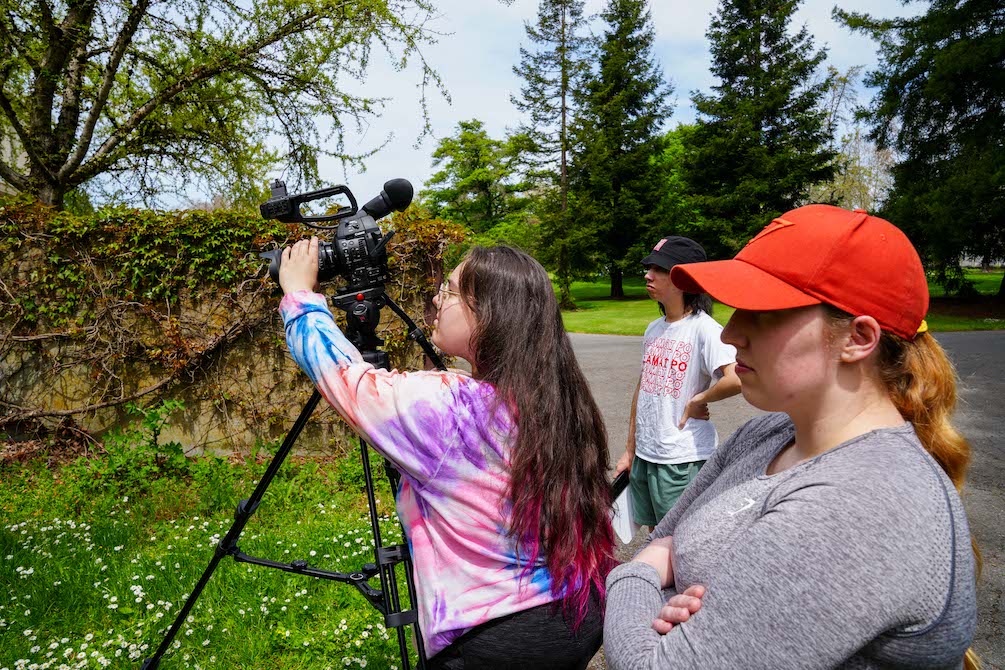Entertainment
Cinematic Arts Program at SSU Opens Doors in Entertainment Industry

Picture this: SSU students as media creators
Sonoma State has added a Cinema Arts and Technology degree program to prepare students for expanding opportunities in the film and video industry. Students learn skills in camera operation, audio production, digital editing, and post-production to ready themselves for careers in video production, media creation, and entertainment industry careers.
“This new degree program allows students to benefit from our robust media studies coursework, which informs their approach to telling impactful media stories,” said Talena Sanders. Associate Professor, Cinematic Arts and Technology Degree Coordinator and Film Studies Minor Coordinator..
With a substantial journalism, documentary film production, and sports media industry in the Bay Area, Sanders said there is always a demand for local emerging media professionals with technical and creative skills.
Ed Beebout, Executive Director for the Center for the Arts at Sonoma State, agrees.
“The industry is growing particularly with the advent of equipment and programs that make filmmaking more accessible to people who major studios don’t back,” Beebout said. “We felt it was a real value to offer a program that teaches students how to use tools supporting a career in cinematic arts and technology.”
Sanders said that the entertainment industry provides salaries significantly higher than the national average, and a degree in film and video production “offers a wide array of interesting and meaningful options for a creative profession.”
“This career field allows students to use their voices and vision to shape society. Film, television, and online content reach wide and diverse audiences worldwide, influencing how we understand and connect with each other.”
Because of the program’s size, students have many opportunities to receive personalized attention and guidance. SSU student Tessa Bradley said she found her experience in the program refreshing and that the smaller classes allow for connection.
“Students are helping to pioneer the program because it is still in its infancy. The ratio of students to staff is smaller than any other program at the university, which allows for more specialized instruction, so it feels more tailored to you and your classmates,” Bradley said.
Sanders said she works with regional film festivals, like the Mill Valley Film Festival, to bring visiting filmmakers to the classroom so students can view films before they premiere in theaters. Throughout the year, guest speakers with different career paths, such as directors, producers, camera assistants, prop masters, costume designers, and editors visit the classroom.
“We are so lucky in our region to have a rich and vibrant independent film culture with many visiting directors and professionals,” Sanders said.
Because video production is important for non-filmmaking industries, Beebout said studios or online content creation companies have also employed students with audio and digital creation skills.
“The opportunities seem to be growing in multiple directions,” he said.
The program recently received a $225,000 grant from KHR McNeely Family Fund, adding to their past support of SSU cinematic arts students. Beebout said the funding helps accumulate technology – such as camera equipment for students to borrow – and also funds scholarships for students who remain in good standing.
“Media studies can be an expensive pursuit. We’re able to offer our students, no matter what their economic background, equal access to great equipment and facilities to learn the skills needed for a career in the field,” Beebout said.
Sander said she is thrilled about students and the “new and growing opportunities to work in cinematic arts and moving images across all forms of media,” and is looking forward to the program’s growth and how the Seawolf alumni network – including those currently working at Marvel and Sony studios – will support each other.
“As the program grows, the students’ dedication to their craft is already deepening. I’m looking forward to seeing how far our students will go together. It will be exciting to see Sonoma State students open doors for each other to enter the industry,” she said.
Krista Sherer – Strategic Communications Writer








